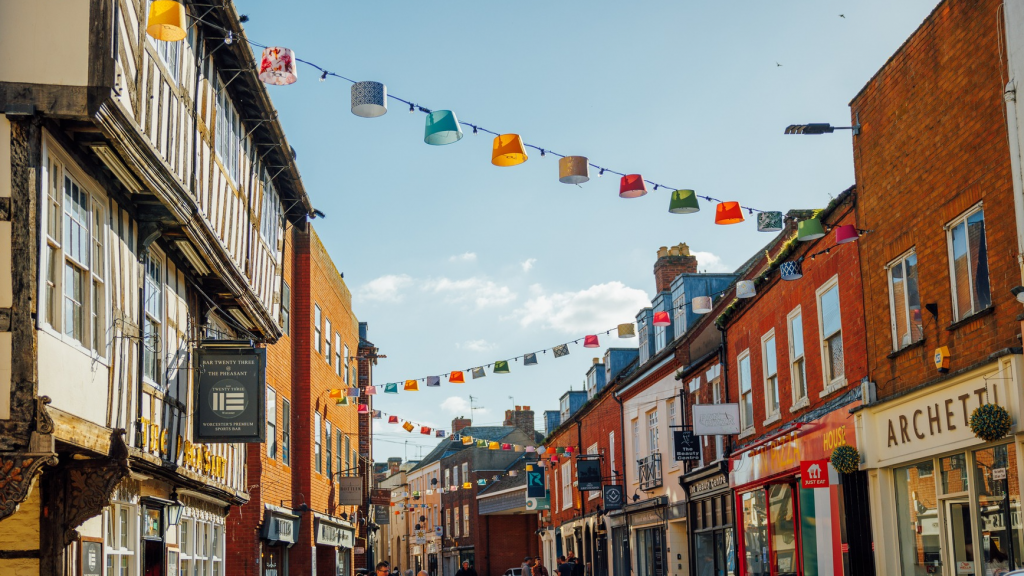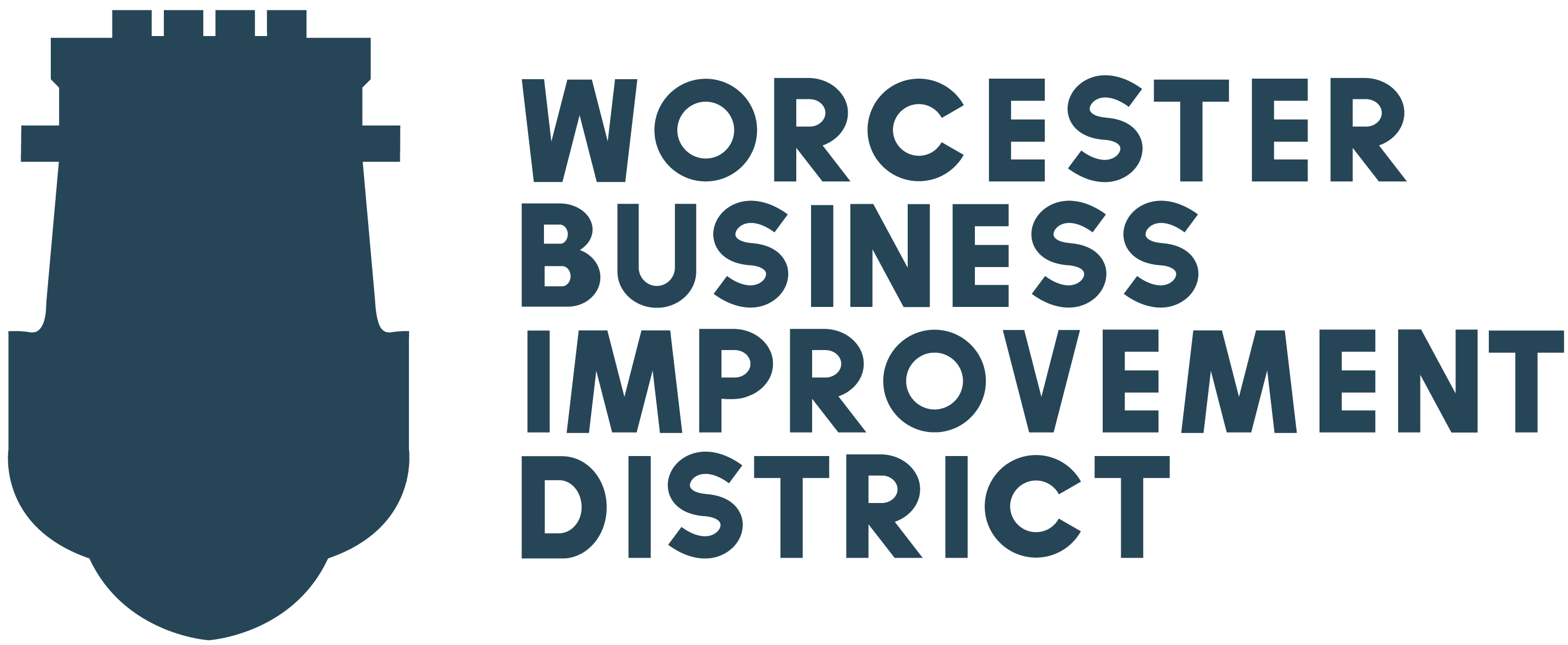Worcester boasts a diverse array of urban spaces, ranging from Tudor housing and cobbled paths to the modern design of the Hive building. Yet, amidst this diversity, there is a common thread—activation of space. This concept lies at the heart of a thriving city. But what exactly does it entail?
In recent years, Worcester BID has led transformative initiatives across the cityscape. From captivating aerial displays on New Street, Friar Street, and the Shambles to the addition of extra festive lighting on Broad Street, street art on wayfinding signs, and the introduction of vibrant city planters and year-round floral displays, these endeavours are examples of activation of space. Looking ahead, Worcester BID plans to further invigorate neglected areas, transforming a neglected overgrown area at the base of Broad Street into a green space teeming with biodiversity and increasing the number of striking city artworks. Such initiatives not only enhance the visual appeal of the city but also serve to increase dwell time and footfall, cultivating a vibrant and dynamic urban environment for all to enjoy.
Dwell time, the duration individuals spend in a specific location, holds significance for businesses and communities alike. By transforming city spaces—such as converting neglected corners into lush green areas with seating—Worcester can create inviting environments that encourage prolonged engagement.
The activation of spaces naturally leads to an upsurge in footfall. When areas undergo revitalisation through attractive enhancements, people are drawn to explore and discover. This surge in pedestrian traffic translates into tangible benefits for local businesses, offering fresh marketing opportunities and ultimately driving sales. An example is The Big Spring Window Trail, featuring 50 beautifully hand-drawn floral business windows. Visitors can download a map for this free floral trail from Worcester BID’s website (www.worcesterbid.com/2024/04/02/thebigspring) and share their experiences using the hashtag #TheBigSpring.
Beyond the economic benefits, activating spaces also enhances Worcester’s aesthetic appeal. Beautifying neglected areas through greening and rewilding, public art, and creative lighting not only makes the city more visually appealing but also instils a sense of pride among residents whilst creating memorable experiences for both locals and visitors.
In conclusion, activating Worcester’s spaces is not just about improving aesthetics; it’s about creating dynamic, inclusive, and thriving urban environments. By enhancing dwell time, increasing footfall, and improving the city’s appearance, Worcester can unlock its full potential as a vibrant and welcoming place to live, work, and visit.

